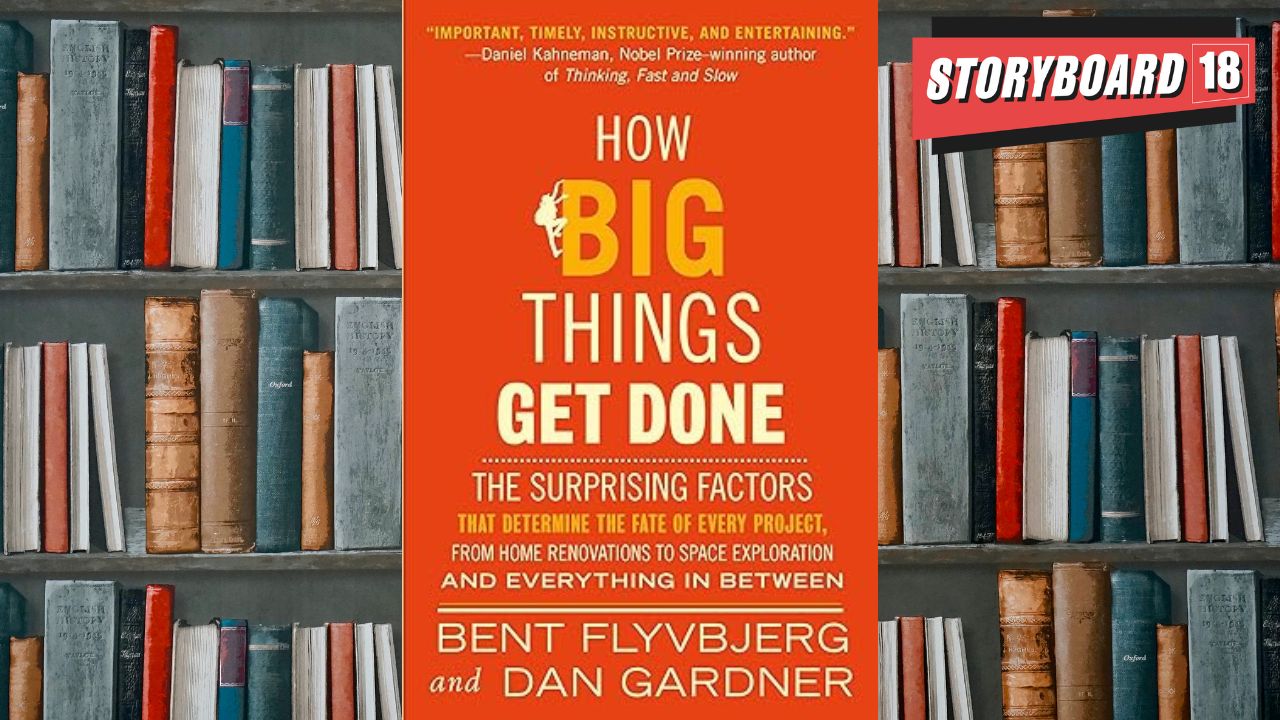‘How Big Things Get Done,’ is a book about life itself; about getting any project done- whether it’s renovating your kitchen, baking a wedding cake or building an airport.
Authors Bent Flyvbjerg and Dan Gardner present a compelling argument; all failed projects, create disaster in their wake for nations, corporations and individuals. They have come to the conclusion that most projects are at risk of going disastrously, wrong-and explain why so, in a scientific manner.
Here are our five Bookstrapping insights:-
1. The authors talks about the concept of frozen experience – something that is a by-product of repetition and proven result. They suggest that by taking a modular approach to projects, not only can we cut costs by 30%, but also save enough to end global hunger by 2030! Is that how much money we are wasting across the world? Reality check time!
2. Appendix B in the book, contains 37 research papers published by Bent Flyvbjerg. Clearly, he is an authority when it comes to project management. One of the most endearing parts in the book is how the work of several researchers is acknowledged and celebrated to explain a point of view in a more complete manner. For example, the idea of ‘psychological safety’ or speaking in your mind within a team, during a project, coined by Harvard’s Amy Edmundson, finds relevant room.
3. Like most well researched books, there aren’t just anecdotes, but detailed and interesting ones at that. How do authors bring Jimi Hendrix’s recording studio and the construction of the T5 Airport at Heathrow in one book and make it so seamless. Has to be a by product of knowing your subject exceedingly well.
4. The authors emphasize that before launching a project, it would be useful to check how long, other similar projects have taken and build an estimate from there. Even if the available estimate is a remote one. The tendency to look at one’s own project as ‘unique’, only endangers the success of any project. The authors also talk about the ugly realities of ‘fat tail’ projects and how divergent and costly they are, from the normal distribution curve.
5. With a database of more than 16,000 projects from 20 different fields over 136 countries, the authors explain concepts such as commitment fallacy, bad-casting and critical errors such as ‘what you see is all there is’, with genuine empathy. They also openly confront disagreements.
For eg; Bent Flyvbjerg talks about Albert Hirschmann, a renowned economist at Columbia University, who wrote an essay in support of ‘doing things better spontaneously’; too much planning and you tend not to do it.’ Disagreeing with Hirschmann, Flyvbjerg says that unplanned successes are exceptions! After all, the failures of not planning enough are rarely discussed. But dig deep enough, and you will find a plethora of them!
Finally, the authors make a strong case for modularity and explain that when it comes to survival of the fittest, the fittest is often a ‘module’ that is successful in reproducing itself. Hence the core of all successful projects is repetition, experience, lower costs and happy teams. An important book about the specifics of ‘project management’- something not much written about! An important book about the principles of ‘getting big things done!’
Reeta Ramamurthy Gupta is a columnist and bestselling biographer. She is credited with the internationally acclaimed Red Dot Experiment, a decadal six-nation study on how ‘culture impacts communication.’ A reading coach, you can find her on Instagram @OfficialReetaGupta.
Read More: Bookstrapping: Supercommunicators by Charles Duhigg
